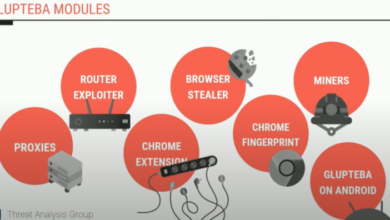
Google Cancels Project Dragonfly?
Google might cancel the build of censored search engine for china named project dragonfly, raising questions about the future of tech in China. This decision could have significant implications for Google’s reputation, the Chinese internet landscape, and global tech companies alike. Will Google sacrifice its values for market access? What alternative strategies might they pursue? Let’s dive into the potential reasons behind this move and its broader consequences.
Project Dragonfly, a search engine designed for the Chinese market, reportedly involved significant censorship. The project’s cancellation, if confirmed, could be a landmark moment in the relationship between tech giants and authoritarian regimes. The potential ramifications for freedom of information and expression in China are substantial. We’ll explore these potential ramifications and examine how this could impact the future of tech in sensitive regions globally.
Background on Project Dragonfly

Google’s ambitions to expand its influence in the Chinese market have spanned several years, marked by both significant efforts and ultimately, setbacks. This ambition was not without its challenges, as navigating the complex regulatory landscape and stringent censorship requirements proved particularly difficult. The project known as Project Dragonfly, a highly sensitive and controversial initiative, was intended to create a search engine tailored to the Chinese market, reflecting these challenges.The reported aim of Project Dragonfly was to develop a search engine that would comply with China’s stringent internet censorship regulations.
This involved filtering out content deemed undesirable by the Chinese government, including political dissidents, religious figures, and sensitive information. Google’s motivation was likely driven by the immense potential for market penetration and revenue generation in the vast Chinese digital space.
Historical Overview of Google’s Efforts in China
Google first entered the Chinese market in 2006 with a localized search engine. However, in 2010, Google pulled out its search engine from mainland China after the government blocked access to the Google.com domain. This marked a significant turning point in Google’s strategy and highlighted the limitations of operating within China’s strict censorship environment.
Reported Aims and Features of Project Dragonfly
Project Dragonfly, a secret project, aimed to create a search engine that would comply with Chinese censorship regulations. The engine was designed to filter out politically sensitive content, and to censor potentially sensitive or inappropriate information according to Chinese government standards. This involved a significant departure from Google’s usual commitment to free information and uncensored searches.
Public Reaction to the Project’s Announcement
The announcement of Project Dragonfly generated considerable controversy and criticism globally. Critics argued that Google, by compromising its principles of free speech and uncensored information, would be complicit in the suppression of dissenting voices. The public backlash highlighted the ethical dilemma of prioritizing business interests over fundamental values.
Motivations Behind Google’s Decision
Google’s motivation to create Project Dragonfly was likely a complex mix of commercial interests and strategic considerations. The enormous potential for market penetration in China, a large and rapidly growing digital market, was a significant factor. Moreover, navigating the complex regulatory landscape in China required a tailored approach to comply with censorship demands, making this project crucial for market entry.
Geopolitical Context Surrounding Google’s Operations in China
China’s strict internet censorship policies create a complex geopolitical context for international tech companies. Navigating these policies necessitates companies to comply with censorship demands or face significant limitations on market access. This creates a difficult situation for international companies seeking to expand their operations in China.
Comparison of Project Dragonfly to Other Censored Search Engines in China
| Feature | Project Dragonfly (Hypothetical) | Baidu (Existing) | Sogou (Existing) |
|---|---|---|---|
| Censorship Compliance | Designed to comply with Chinese government censorship standards. | Complies with Chinese government censorship standards. | Complies with Chinese government censorship standards. |
| Search Algorithm | Likely modified to avoid sensitive s and content. | Modified to avoid sensitive s and content. | Modified to avoid sensitive s and content. |
| Data Collection and Handling | Potential for restricted data collection and handling. | Data collection and handling are subject to Chinese regulations. | Data collection and handling are subject to Chinese regulations. |
| User Privacy | Potential concerns regarding user privacy given Chinese regulations. | Concerns regarding user privacy given Chinese regulations. | Concerns regarding user privacy given Chinese regulations. |
Potential Reasons for Cancellation
Google’s decision to potentially cancel Project Dragonfly, a censored search engine for the Chinese market, is a significant development with implications for both Google and the Chinese internet landscape. This move signals a complex interplay of financial pressures, reputational concerns, and international political considerations. The cancellation could represent a shift in Google’s approach to the Chinese market, prompting alternative strategies.The cancellation of Project Dragonfly, if confirmed, would be a notable turning point in Google’s global strategy.
Google’s potential cancellation of Project Dragonfly, the censored search engine for China, raises some interesting questions about the ethics of AI development. This decision highlights the urgent need for better oversight and safety measures in AI. Thankfully, there’s a growing recognition of the need for “AI Code Safety Goggles” to ensure that AI is built and deployed responsibly, as outlined in Deploying AI Code Safety Goggles Needed.
Ultimately, the future of search engines, especially those operating in sensitive regions like China, will depend on careful consideration of these issues.
It highlights the delicate balance between commercial interests and ethical considerations in a politically sensitive market. The decision likely stemmed from a careful evaluation of various factors, including the potential for significant financial loss, reputational damage, and international pressure.
Google might be pulling the plug on Project Dragonfly, their planned censored search engine for China. This potential cancellation highlights the complexities of navigating global censorship, but also raises interesting questions about the security implications of cloud databases like Microsoft Azure Cosmos DB. Recent details about a vulnerability in Azure Cosmos DB, as seen in Azure Cosmos DB Vulnerability Details , further emphasize the importance of robust security measures when dealing with sensitive data, which is crucial for any search engine operating in a potentially hostile environment.
The whole situation surrounding Project Dragonfly is really a fascinating case study in global tech ethics.
Financial Considerations
Google’s initial foray into the Chinese market through Project Dragonfly faced considerable financial obstacles. The stringent censorship requirements and the need to adapt to China’s unique internet infrastructure posed substantial technical and operational challenges. Furthermore, the potential for reduced user engagement and lower profitability compared to other markets could have played a significant role in the decision-making process.
The cost of compliance with Chinese censorship regulations might have outweighed the anticipated return on investment. For example, other companies have faced similar financial challenges when operating in China, requiring extensive resources for compliance.
Potential Impacts on Google’s Reputation and Brand Image
Google’s brand is closely associated with freedom of information and open access to knowledge. Implementing a censored search engine could significantly damage Google’s reputation and brand image, particularly among users in Western countries and those who value unfiltered information. The perception of compromising its core values for commercial gain would likely lead to a negative backlash. The controversy surrounding the project has already garnered significant media attention, potentially exposing Google to reputational risks that might outweigh potential profits.
Influence of International Pressure on Google’s Decision-making Process
International pressure, including concerns from human rights organizations and government bodies, could have exerted a considerable influence on Google’s decision. The perceived ethical implications of collaborating with a government known for its censorship policies could have created a significant obstacle. Google’s reputation is heavily reliant on trust, and a compromise on core values could harm its long-term credibility.
The pressure to maintain a strong public image and adhere to international standards of ethical conduct could have been a decisive factor.
Potential Consequences for Chinese Internet Users
The cancellation of Project Dragonfly could have various implications for Chinese internet users. It could potentially limit their access to certain information and perspectives not readily available through other search engines. However, it could also lead to the development of alternative, potentially more reliable search platforms. It’s important to acknowledge that the long-term impact on Chinese internet users remains uncertain.
Potential Alternative Approaches for Entering the Chinese Market
Google could adopt various alternative approaches to entering the Chinese market. These include focusing on services not subject to censorship, such as Google Maps or Google Translate. They could also explore partnerships with local Chinese companies that are more aligned with their values. Developing a product that operates outside of the search engine sector and avoids the sensitive political issues of censorship could also be a potential solution.
Pros and Cons of Cancelling Project Dragonfly
| Pros | Cons |
|---|---|
| Preservation of Google’s brand image and reputation. | Potential loss of market share in China. |
| Avoidance of ethical and reputational risks associated with censorship. | Reduced revenue opportunities. |
| Compliance with international standards of ethical conduct. | Potential for alienating Chinese users who rely on Google services. |
| Mitigating potential legal and financial repercussions. | Missed opportunity for market penetration in China. |
Impact on the Chinese Internet Landscape: Google Might Cancel The Build Of Censored Search Engine For China Named Project Dragonfly

The potential cancellation of Project Dragonfly, Google’s censored search engine for China, marks a significant event with ramifications across the Chinese internet landscape. This decision carries implications for the competitive dynamics, freedom of information, and the broader relationship between tech companies and the Chinese government. The cancellation raises questions about the future of digital innovation and censorship within the region.The cancellation of Project Dragonfly likely signals a shift in Google’s approach to the Chinese market.
This change could lead to a reassessment of the company’s strategy, potentially influencing its future investments and partnerships in the region.
Competitive Landscape Impacts
The cancellation of Project Dragonfly will likely reshape the competitive landscape in China’s search engine market. Baidu, the dominant player, will likely maintain its leading position, potentially facing less direct competition from a Google-backed search engine. Other domestic search engines, though smaller, might experience a slight surge in user base and market share, but it is unlikely to be substantial.
This change might incentivize smaller players to innovate and find new niches to compete.
Freedom of Information and Expression
The cancellation of Project Dragonfly, while not directly impacting individual freedom of information and expression, could influence the broader discourse surrounding censorship and the role of technology in authoritarian regimes. The cancellation’s significance lies in its potential impact on future ventures and the perception of international companies operating within the Chinese digital ecosystem. It might prompt similar considerations from other technology companies seeking to enter or remain active in China.
Comparison to Other Similar Events
Several instances in the digital sphere highlight similar dynamics. The case of Facebook’s approach to the Chinese market and the evolution of social media platforms’ presence within the region demonstrates the complex relationship between global tech companies and the Chinese government. The lack of transparency and the potential for government interference are often defining factors in such instances.
Possible Responses from the Chinese Government
The Chinese government might react to the cancellation of Project Dragonfly in various ways. These reactions could include increased scrutiny of foreign tech companies’ operations within China or the promotion of alternative domestic search engine solutions. Potential responses could also include further tightening of regulations on internet content and user data.
Implications for Other Tech Companies
The cancellation of Project Dragonfly carries implications for other tech companies operating in China. Companies must carefully weigh the risks and rewards of operating in a highly regulated market. This situation underscores the necessity for a nuanced understanding of the Chinese regulatory environment and the potential impact of political considerations on business decisions.
Search Engine Experience Comparison
| Feature | China (e.g., Baidu) | Other Countries (e.g., Google, DuckDuckGo) |
|---|---|---|
| Search Results | Often tailored to government-approved content, potentially censoring information deemed sensitive. | Generally wider range of results, with less or no censorship. |
| User Privacy | Data collection and usage practices are subject to Chinese regulations. | Privacy policies and data handling vary between countries and companies. |
| Accessibility | Access to certain foreign websites or services might be restricted. | Generally unrestricted access to most websites and services. |
| Innovation | Emphasis on domestic solutions, potentially limiting exposure to international innovations. | Exposure to international innovations and competition drives constant improvement. |
Alternative Approaches and Strategies
Google’s potential withdrawal from developing a censored search engine for China presents a crucial opportunity to explore alternative strategies for operating in this complex market. These strategies must balance Google’s commitment to its values with the realities of the Chinese market, recognizing the significant limitations and opportunities within it. This section will Artikel potential approaches, evaluating their advantages and disadvantages, and propose a framework for Google to navigate these complexities.
Alternative Strategies for Operating in China
Google needs to consider several alternative approaches beyond Project Dragonfly. These approaches involve adapting their services to the Chinese market while maintaining core principles. A critical aspect of these strategies is recognizing that a direct, full-scale launch might not be the most effective approach.
- Partnering with Local Entities: Google could collaborate with reputable Chinese companies or organizations. This might involve joint ventures or licensing agreements, allowing Google to leverage existing infrastructure and expertise within the Chinese market. This approach allows for a more controlled entry and gradual adaptation to local regulations. A significant advantage is the potential for navigating the complexities of the Chinese internet landscape through partnerships with local entities who possess in-depth knowledge of the market.
However, concerns exist about the potential compromise of Google’s values and standards, and the loss of some control over operations. The risk of being perceived as compliant with Chinese censorship, even through collaboration, is also present. Examples of successful partnerships in similar contexts include companies like IBM and their ventures in China.
- Focusing on Specific Services: Google could prioritize specific services or products that have less stringent regulatory requirements in China. This could include Google Cloud services, which might be less susceptible to direct censorship compared to search or social media platforms. This approach would allow Google to establish a foothold while mitigating immediate concerns. This approach offers the advantage of allowing Google to maintain its core values while focusing on areas with less censorship pressure.
However, this strategy may limit Google’s overall presence and potential reach in the Chinese market, potentially hindering growth opportunities. The success of this approach hinges on the specific services chosen and their potential for adaptation within the Chinese context.
- Developing a Localized Search Engine: Google could create a localized search engine, tailored to Chinese users and regulations. This approach would entail adapting the search algorithms to comply with local rules while maintaining some degree of independence and control. This strategy allows for a gradual and measured adaptation to the Chinese market while preserving Google’s core values. The challenge lies in balancing the need to adhere to local regulations with the desire to maintain the integrity and independence of Google’s search algorithm.
Examples of companies adapting their products to specific regional markets show the viability of this approach, though it necessitates a significant investment in local expertise and adaptation.
Advantages and Disadvantages of Each Strategy
| Strategy | Advantages | Disadvantages |
|---|---|---|
| Partnering with Local Entities | Leverages local expertise, mitigates risks | Potential compromise of Google’s values, loss of control |
| Focusing on Specific Services | Reduced regulatory pressure, potential for controlled entry | Limited market reach, may hinder growth |
| Developing a Localized Search Engine | Maintains some independence, gradual adaptation | Significant investment, balancing local regulations with core values |
Framework for Upholding Google’s Values
Google should establish a clear framework for evaluating potential collaborations and adaptations. This framework should include rigorous criteria for assessing potential partners and projects, focusing on safeguarding Google’s core values. It should also include clear guidelines for the ethical use of data and user privacy. A crucial element of this framework is maintaining transparency with stakeholders about the challenges and trade-offs involved in operating in China.
Challenges and Opportunities in Alternative Strategies
Navigating the Chinese market requires a nuanced understanding of the regulatory environment. Adapting to these complexities while maintaining Google’s values presents significant challenges. However, there are also opportunities to influence the Chinese internet landscape in a more positive way through innovative approaches and collaborations. Examples of companies that successfully navigated similar challenges, adapting to local market conditions while maintaining core values, can provide valuable lessons.
Implications for Global Tech Companies
Google’s decision to potentially cancel Project Dragonfly carries significant implications for other global tech companies, forcing them to re-evaluate their strategies in politically sensitive regions. This decision underscores the complex interplay between technological innovation, geopolitical pressures, and ethical considerations in the digital age. The cancellation signals a potential shift in the landscape, forcing companies to confront the reality of varying regulatory environments and user expectations across different markets.The cancellation of Project Dragonfly isn’t simply a matter of avoiding censorship in China.
It raises questions about the long-term viability of operating in environments with stringent censorship requirements. Other tech companies, especially those operating in similar markets, must now carefully assess the risks and rewards of engaging in these environments, potentially leading to a reevaluation of their market entry strategies and product offerings.
Potential Shifts in the Regulatory Landscape
The cancellation of Project Dragonfly may influence future regulatory discussions around censorship and data localization. Governments worldwide are increasingly scrutinizing the activities of tech companies, particularly in the realm of data privacy and information dissemination. This increased scrutiny may lead to stricter regulations on how tech companies operate in politically sensitive regions. The Chinese government’s approach to online content control serves as a precedent for other nations, potentially leading to a domino effect of similar regulations worldwide.
Examples like India’s recent data localization mandates highlight the growing trend of governments seeking greater control over digital platforms within their borders.
Potential Risks and Opportunities for Companies in Politically Sensitive Regions
Companies operating in politically sensitive regions face a complex web of risks and opportunities. The cancellation of Project Dragonfly emphasizes the risk of significant reputational damage and financial losses should a company fail to comply with local regulations. However, navigating these regions strategically can unlock significant market potential. Companies must carefully weigh the risks and potential rewards, prioritizing compliance with local regulations while maintaining ethical standards and user privacy.For example, Facebook’s ongoing operations in various countries with stringent censorship policies illustrate the delicate balance companies must strike.
Google might be pulling the plug on Project Dragonfly, their planned censored search engine for China. This potential cancellation, amidst the recent news surrounding the Department of Justice Offers Safe Harbor for MA Transactions, highlights the complexities of navigating international market pressures and regulatory landscapes. Perhaps this decision is a smart move, acknowledging the ethical dilemmas inherent in such a project.
Ultimately, Google’s move speaks volumes about the changing global tech landscape.
Potential Strategies for Global Tech Companies, Google might cancel the build of censored search engine for china named project dragonfly
- Compliance and Adaptation: A crucial strategy involves meticulous compliance with local regulations. This includes understanding and adapting to the unique regulatory frameworks in each market. Companies should develop clear guidelines and protocols for content moderation and data handling within these regions. This necessitates a deep understanding of the local legal and political landscape.
- Transparency and Communication: Open communication with users and stakeholders about policies and practices is essential. Transparency builds trust and helps manage expectations. Companies should clearly articulate their commitment to user rights and data privacy, particularly in politically sensitive regions. A proactive approach to addressing concerns is vital.
- Ethical Frameworks and Policies: Global tech companies must establish robust ethical frameworks and policies to guide their operations in all regions. These policies should address censorship, data privacy, and user rights. Developing a comprehensive code of conduct for their employees is critical.
- Collaboration and Advocacy: Collaboration with civil society organizations and human rights groups can help to mitigate risks and promote ethical practices. Companies can also advocate for policies that protect freedom of expression and digital rights globally.
Navigating the Regulatory Landscape
| Strategy | Description | Potential Benefits | Potential Drawbacks |
|---|---|---|---|
| Compliance and Adaptation | Understanding and adhering to local regulations in politically sensitive regions. | Reduced risk of legal challenges and reputational damage. | Potential for compromising company values or user rights. |
| Transparency and Communication | Open communication about policies and practices to stakeholders. | Enhanced trust and accountability. | Potential for revealing sensitive information or strategies. |
| Ethical Frameworks and Policies | Establishing clear ethical standards for global operations. | Enhanced reputation and ethical standing. | Difficulty in enforcement and adaptation across diverse markets. |
| Collaboration and Advocacy | Working with civil society groups and human rights organizations. | Enhanced credibility and ethical standing. | Potential for conflicting priorities or agendas. |
Epilogue
The potential cancellation of Project Dragonfly highlights the complex challenges facing tech companies operating in politically sensitive regions. Google’s decision, if finalized, will undoubtedly impact the Chinese internet landscape, potentially affecting freedom of information and prompting reactions from the Chinese government. It’s a crucial moment for examining the ethical dilemmas of market access and the future of technology in a world grappling with differing values and regulations.
FAQ Guide
Why might Google cancel Project Dragonfly?
Several factors could be at play, including financial concerns, international pressure, and damage to Google’s reputation from the perceived compromises on its values. Potential risks to brand image and negative PR from human rights groups could also be significant considerations.
What are the potential impacts on Chinese internet users?
The cancellation could lead to less censorship, but also potentially to a more fragmented and less reliable search experience, as Google may not be the only player offering access to information.
How might this affect other tech companies operating in China?
The cancellation could set a precedent, potentially influencing other tech companies’ strategies in similar politically sensitive markets. It could also prompt more stringent regulatory measures.
What alternative strategies could Google pursue?
Google could consider partnering with local companies, focusing on specific services like translation or cloud computing, or engaging in public advocacy to uphold its values. This will depend on their long-term vision for operating in the Chinese market.





